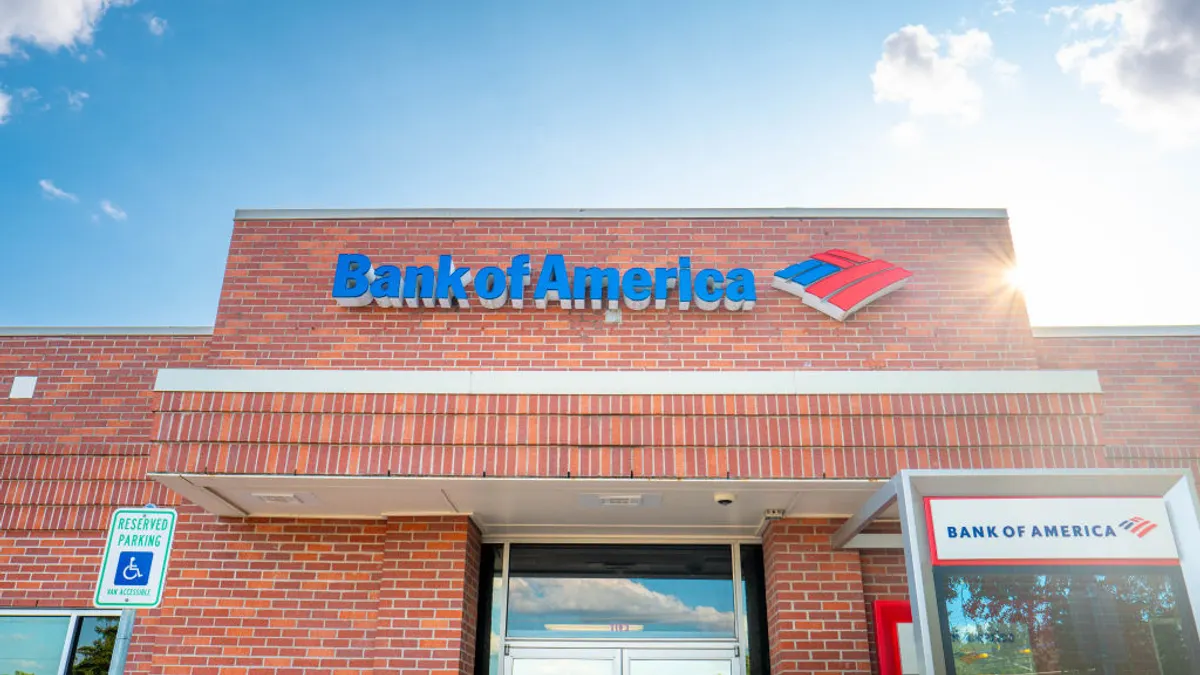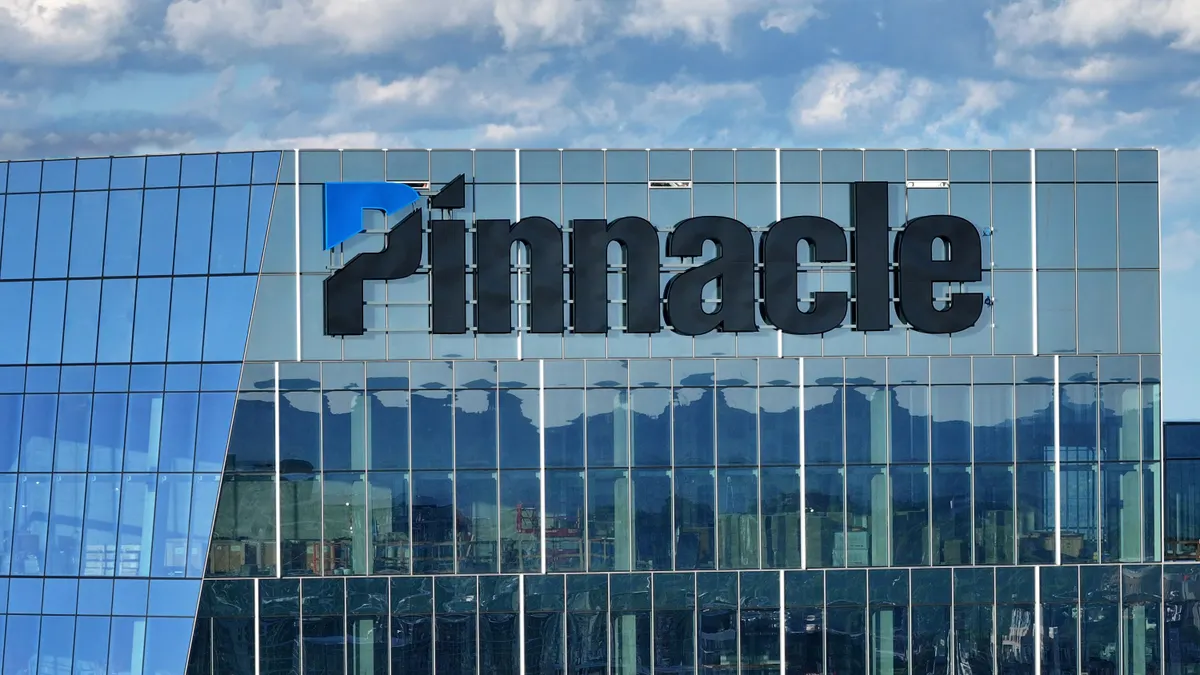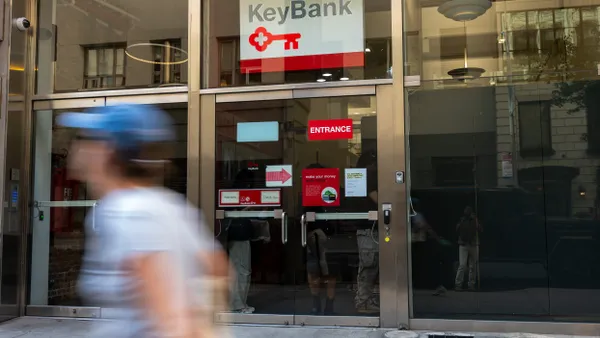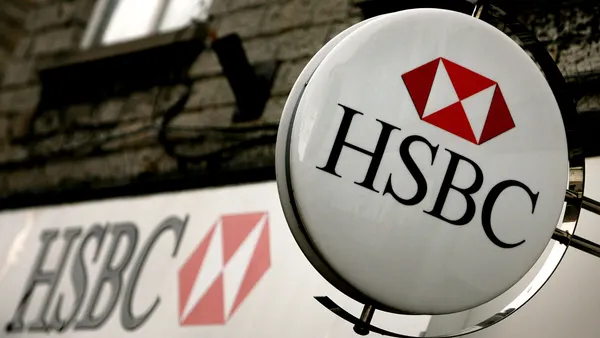To Bank of America, it’s become clear that “you have to be proximate to your clients,” said Will Smayda, the lender’s head of financial centers.
“They may or may not visit you,” he quickly added. But the bank’s presence affirms its commitment to a community, and “there’s a brand value” with that, Smayda said.
Even as 90% of the bank’s client interactions now occur digitally, “proximity is still important to people, and I think it will be, into the future,” he said during an interview last week.
In May, the Charlotte, North Carolina-based lender said it planned to open 40 new branches by year’s end, and 110 additional locations between 2026 and 2027. Bank of America has invested $5 billion in new and existing locations since 2016.

The bank has about 3,700 branches across some 200-plus markets. Its branch count has shrunk by about 21% over the past 10 years; in 2015, the bank had about 4,700 branches.
To get there, the bank has pursued what it calls “consolidations,” Smayda said.
“What we’ll find is two financial centers that we’ve had for decades may be supporting a neighborhood, and instead of heavily reinvesting in one or the other, we’ll close both and put up a new building,” he said.
In those new builds, the changed format features more space for conversations, and screens take the place of more static marketing.
As its branch count has fallen and digital banking has become the norm, the bank’s tally of consumer and small business customers has grown by about 47% in the past decade, and the assets those customers keep at the bank has climbed, Smayda said.
But branches still have a place, and BofA isn’t alone in its push to open more: JPMorgan Chase, PNC, Fifth Third and Huntington are among other banks pursuing meaningful branch expansion.
Bank of America sees about 600,000 clients a day in its branches, and most new customers come to the bank through branches, Smayda said.
“A majority of that new client work happens in our financial centers, so they are crucial to us,” Smayda said of branches. “We want to be there for when they make that decision, we want to make that easy for them.”
Last year, the bank had about 10 million appointments with its customers, he said. As more basic banking functions are done online and physical locations become hubs for advice and in-depth information, professional services-type appointments are replacing the old transactional mode in branches, he noted.
When asked whether he expects the branch total to continue dropping over time, Smayda said the bank will “probably, net, continue to trend down a little bit” – though any slimming won’t stem primarily from a need to cut costs.
“How many we keep, that’ll be dictated by, really, client behavior,” he said. “We’ll adapt to what our clients need from us.”
Adding to the retail footprint
This month, the bank will open four branches in Boise. Idaho’s population has swelled as residents of states like California migrated during the COVID-19 pandemic, with some movers being existing Bank of America customers, Smayda said.
Boise is one of 20 markets where the bank has long had a presence, between its Merrill Lynch entity and commercial and business banking, “but we’ve not had a consumer footprint,” he said.
In a couple of years, Bank of America will do the same in Wisconsin, Louisiana and Alabama, although the bank hasn’t shared dates or locations yet, Smayda said.
In evaluating the viability of branches, Bank of America considers demographics all retailers do, he said. Is the community growing or shrinking? What businesses anchor the community? How is the community served today by the lender, if it’s a market BofA is already in – or by competitors, if it’s not? The answers to those questions determine the number of branches needed, he said.
As far as measuring success once branches have opened, Smayda said the bank takes a close look at its existing clients, including, for example, commercial clients whose employees may need consumer banking. “Do they choose to grow with us faster, because we now have a presence?” he said.
The bank aims to become a top three financial services company in each market it’s in. “In the community, how quickly can we take market share?” he said. “That is probably the single kind of unifying metric.”
In places like Boise, Dallas or Charlotte, “we have to keep up with these communities as they grow,” Smayda said. At the same time, the bank has customer bases it wants to retain and grow in existing areas, pointing to the importance of investing in legacy and newer growth markets. “You’ve got to be both,” he said.
Some new branches lack traditional banking services that have become less frequently used by customers today.
Night drops or safe deposit boxes are “not as interesting to today’s business owners or today’s clients,” Smayda said.
“We will sometimes open without them, and because it’s not a service we’ve ever offered … it’s not missed,” he said.
Today’s customers, Smayda noted, are more inclined to seek fraud protection or education.
In any case, he said, branches are “critical for the foreseeable future.”













